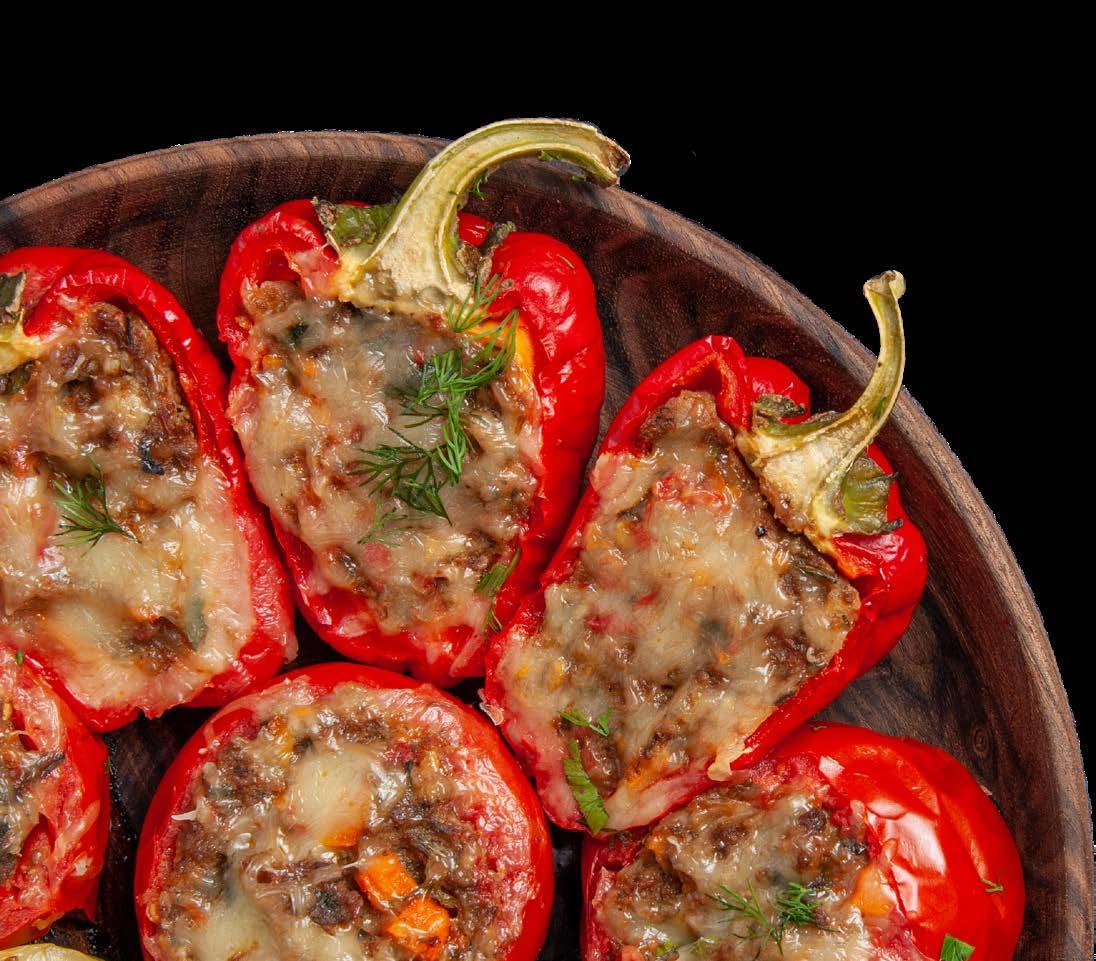ISSUE 04 | WINTER 2024
be well
MAKING HEALTH POSSIBLE
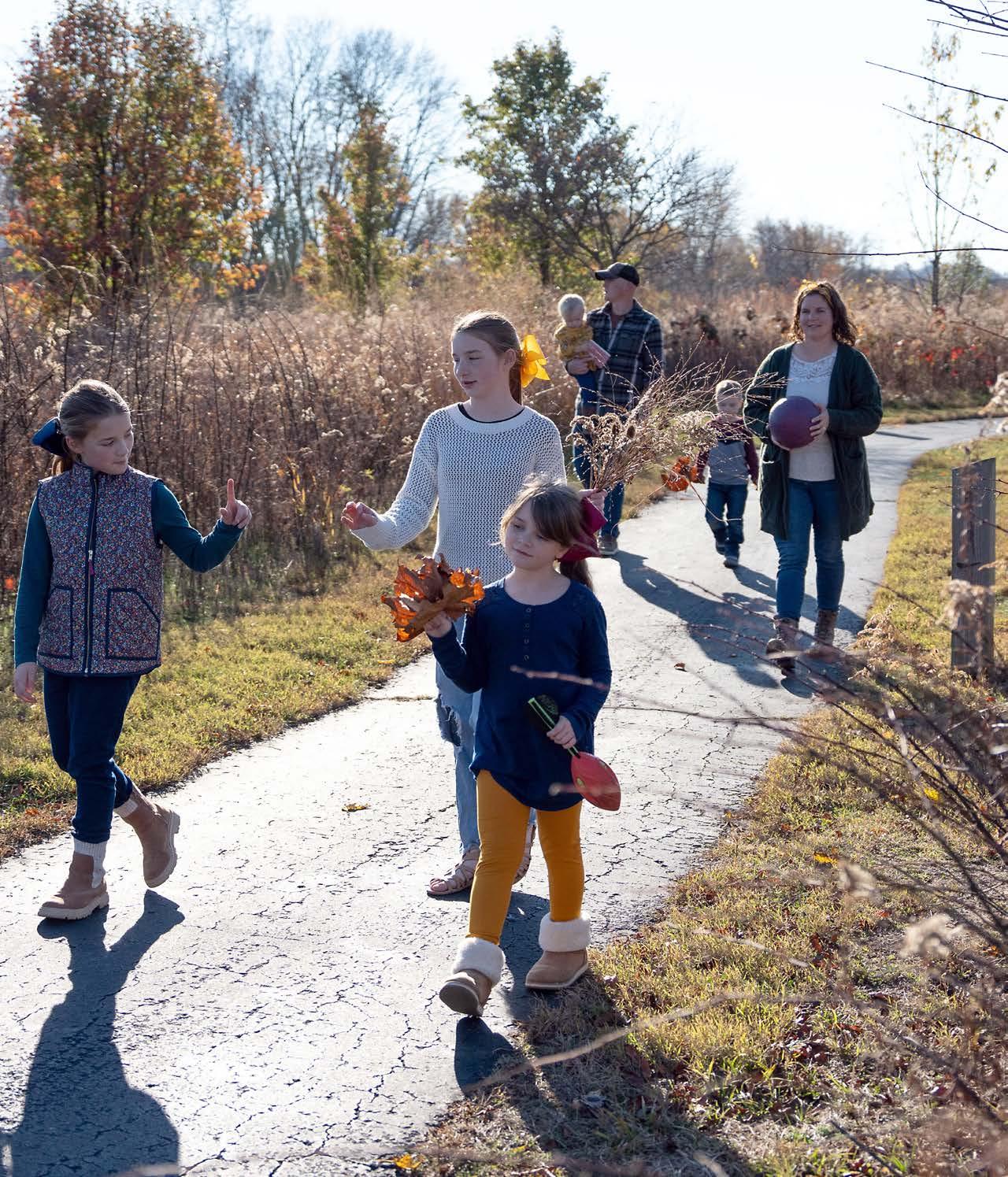
FITNESS FOR EVERY AGE WHY IS EXERCISE IMPORTANT FOR EVERYONE? | 04
HEALTHY WINTER ACTIVITIES THE WHOLE FAMILY CAN (REALLY) ENJOY THE GROWING IMPORTANCE OF FAMILY TIME | 8
IT’S NOT JUST ABOUT EATING MORE VEGGIES
HELPING YOUR KIDS DEVELOP A HEALTHY RELATIONSHIP WITH FOOD | 12
HOW MUCH EXERCISE IS THE RIGHT AMOUNT?
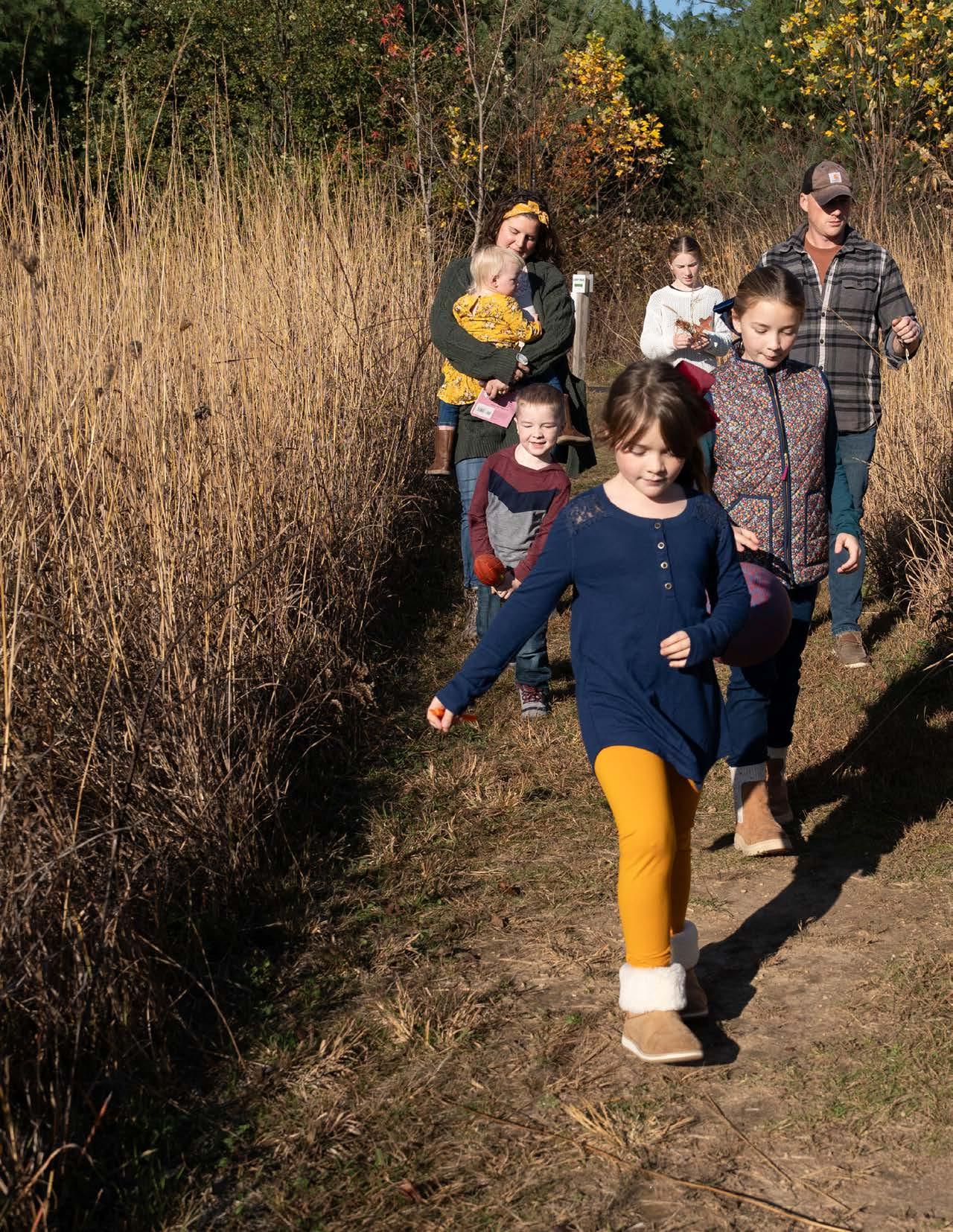
See page 4
See What is INSIDE This Issue...

HEALTHY WINTER ACTIVITIES THE WHOLE FAMILY CAN (REALLY) ENJOY IT’S NOT JUST ABOUT EATING MORE VEGGIES HELPING YOUR KIDS DEVELOP A HEALTHY RELATIONSHIP WITH FOOD


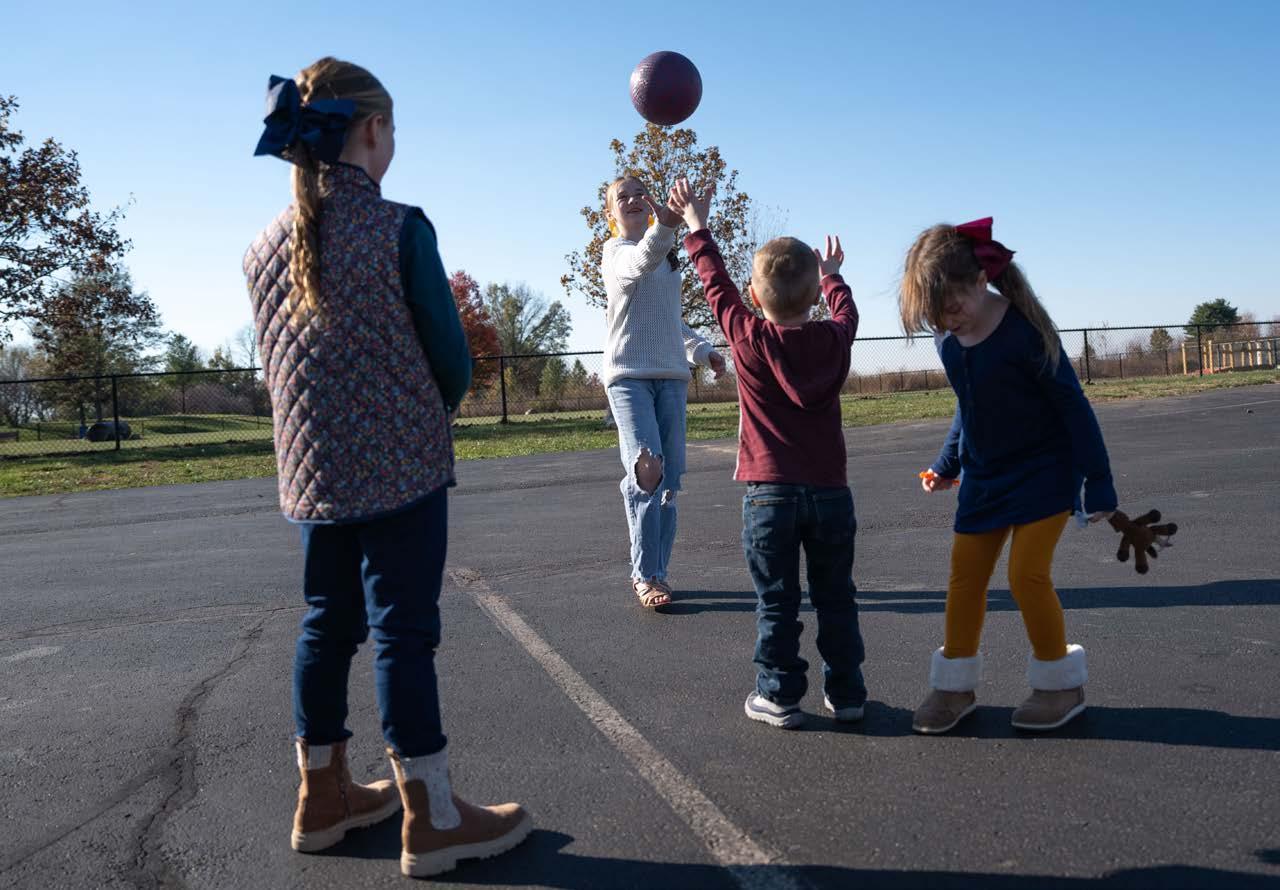
FITNESS FOR EVERY AGE
Do you witness your young child zooming around the living room and wonder if they will ever get tired? On the other hand, watch many teens and they will choose to sit for hours on end until a friend comes along with a pick up game. And we all know how “easy” it is to get ourselves to the gym. While the desire to engage in physical activity changes with time, the need for it remains a constant if you want to live your healthiest life.
WHY IS EXERCISE IMPORTANT FOR EVERYONE?
We all know why movement is important for our health. You can’t even read your favorite magazine without someone touting the benefits of working out for your heart, lungs, bones and muscles. Not only that, it helps maintain a healthy weight and BMI. If you need more inspiration, however, look to the newest data and research to give you even more (and kind of cool) reasons to get yourself and your family off the couch. Here were some things we thought you might not yet know about exercise:
• Boosts your cognitive function and brain health with a flood of important, feel-good chemicals and hormones…that means you have more brain power for work and your kids have an easier time concentrating in school.
• Use those same chemicals to enhance your mood and energy levels, decreasing your risk for depression and other stress related mental health issues.
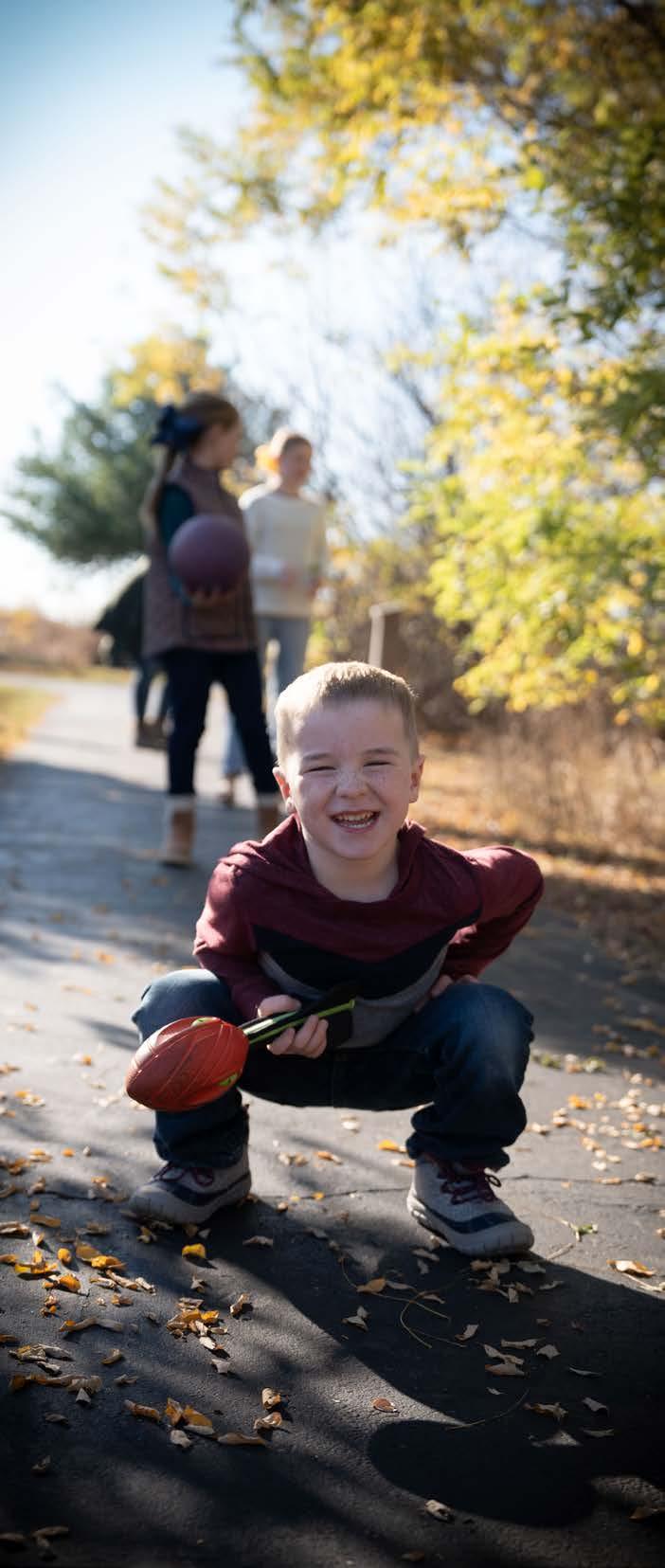
• Can help you live longer independently as you age.
• Increase your paycheck: According to a study in Finland, researchers found that those who exercised regularly had a higher income level.
• Reduces your risk of all types of cancer.
• Helps you get better quality sleep.
• Helps children develop social skills and cultivate the ability to interact with their peers.
• Boosts self esteem and body image, which is especially important in helping your adolescent to feel strong and in control of their body.
• Helps you maintain a better posture over time.
HOW MUCH IS THE RIGHT AMOUNT?
As you can imagine, recommendations vary by age group. That is why we have a handy guide for you. Share this with your family and help them set a goal to get their daily dose of movement!
PRESCHOOL
AGED CHILDREN (3-5 YEARS)
Maintain physical activity throughout the day in the form of active play. Children should be given plenty of time to learn large and small motor skills through activities that they enjoy.
CHILDREN AND ADOLESCENTS
(6-17)
This group should be getting about 60 minutes of daily exercise. This includes both moderate and vigorous forms of exercise, such as active games, team sports, riding a bike, brisk walking, swimming, dancing and jumping rope. In addition, three days of the week should include vigorous exercises.
ADULTS
(18-64)
Get 150 minutes a week of moderate-intensity exercise such as brisk walking, swimming, dancing, riding a bike, etc. In addition, they should also be getting 3 days a week of strength training. For some, combining cardio and strength is an efficient way to work the
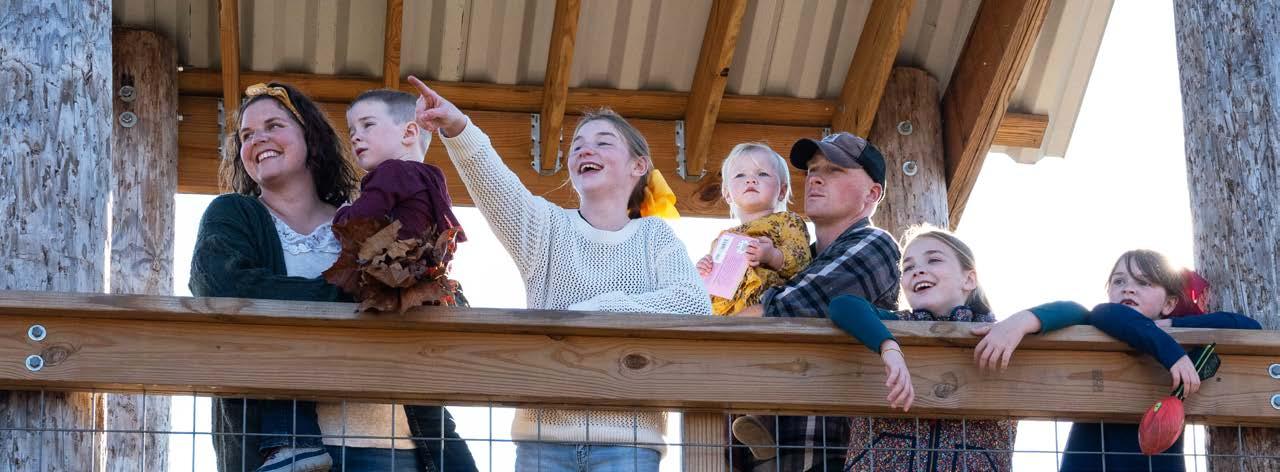
entire body and rev up the cardiovascular system. Some examples of these types of workouts include CrossFit and H.I.I.T.
OLDER ADULTS (65+)
Like adults, this group should be getting 150 minutes a week of moderateintensity exercise along with 2 days a week of activities that strengthen muscles.
PREGNANT AND POSTPARTUM
For those in this category, at least 150 minutes of moderate intensity exercise, such as a brisk walk, is beneficial for physical, mental and emotional health.
THE
GOOD
NEWS?
For kids who are already on a sports team or doing another form of athletic activity daily or weekly, they are likely getting all of the exercise they need! And for our weekend warriors out there, we see you too! Pat yourself on the back for not only choosing to maintain healthy lifestyle habits, but also modeling that for your families.
Your local Hancock Wellness Centers offer movement classes for everyone in the family and more! For more information, head to the front desk at any one of the three locations: New Palestine, McCordsville and Greenfield or visit HancockHealth.org/wellnesseducation.
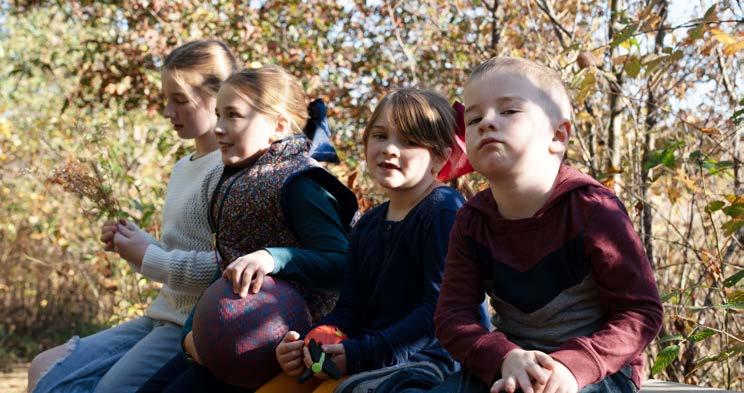
THE IMPORTANCE OF REST
We all know that being physically active is important to our wellbeing, but sometimes we forget the importance of rest. Kids are participating in more strenuous athletics than ever and are experiencing higher levels of school-related stress. Parents are also feeling the pressure, with skyrocketing rates of mental illness taking hold in our culture. It seems like REST is just what the doctor ordered.
Here are some ways to make rest one of your family’s top priorities:
• Cultivate a meditation or breathwork practice that will help you ground and center yourself on a daily basis.
• Take time to have fun together amidst busy schedules by enjoying family movie or game nights.
• Practice good sleep hygiene and teach it to your children.
• Spend some time screen-free to give your nervous system a break from the constant stream of information.
• Get back into nature (even during the chilly months) by taking walks together.
• Stop using the word “lazy” and instead celebrate times when nothing is planned as the chance to rest your whole body, mind and spirit without distraction.




HEALTHY WINTER ACTIVITIES THE WHOLE FAMILY CAN (REALLY) ENJOY
How many times have you brought your whole family to an event or activity, only to realize it isn’t as great as you thought? Or your screenager won’t quit on their phone? Or the littlest one needs a snack/bathroom break/nap? Finding something active that everyone can enjoy is hard work, but it’s worth it to create memories with your family. Maybe it’s time to find something new and exciting that will have everyone on board.
THE GROWING IMPORTANCE OF FAMILY TIME
Family time has always been an important aspect of developing strong relationships with your kids. No matter what your family looks like, though, it can be difficult to find the time to get everyone together. But don’t stop trying! Time spent together is more important now than ever, when kids and parents are exhibiting heightened states of mental illness, stress and overwhelm and succumbing to pressures from work, peers, etc. Participating in fitness activities with your family will foster healthy habits in your kids and help to curb their stress this fall and winter.
TAKE
A LITTLE VACATION WITH YOUR
FAMILY THAT DOESN’T REQUIRE YOU TO PACK YOUR BAGS AND JUMP ON A PLANE!
Getting out of the same old boring routine is a great way to feel closer to those you love. Keep it fresh and exciting by trying out these new adventures right in your backyard:
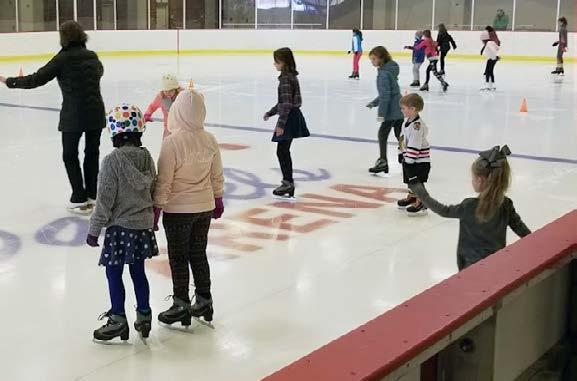
VISIT A LOCAL ICE RINK
Whether you are a seasoned skater or just starting out, ice skating is a great way to stay active and have fun as a family during the fall and winter months. Indoor rinks are open no matter the weather and offer rental skate options for those who don’t have their own pair. After a few hours on the ice, everyone will be ready for some hot chocolate and relaxation together.
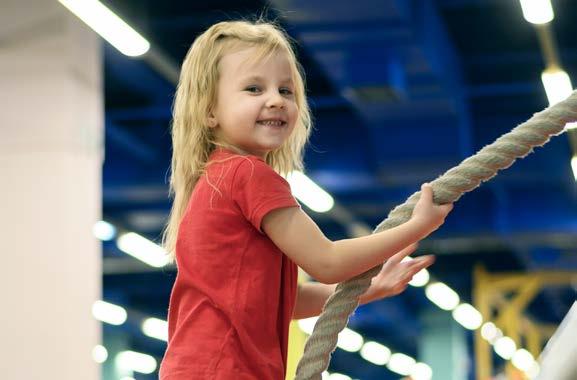
REACH NEW HEIGHTS AT AN INDOOR TRAMPOLINE PARK
Great for all ages (even parents!), these offer quite a bit of family exercise and fun in a short amount of time. Adrenaline Family Adventure Park in Fishers or Urban
Air in Plainfield and Franklin are excellent choices. Some places require a reservation so make sure to check them out online before heading out!

VISIT A STATE PARK
Hiking and taking in the beauty of natural surroundings as a family will create memories everyone can look back on. Some kids may scoff at the idea of time spent in the woods away from their devices, so try out something that has out-of-the-ordinary views, such as Turkey Run or Clifty Falls. If you are lusting for a road trip, head up north to Indiana Dunes State Park for dazzling views of Lake Michigan in the fall and winter!

GET UP CLOSE AND PERSONAL WITH WILDLIFE
If you haven’t been to Wolf Park yet, now is your chance to take an awe-inspiring trip to come into contact with these amazing predators. This 70-acre non profit park and research facility just outside of Lafayette offers a natural habitat for wolves, bison, foxes and other animals so you can be sure to see some of Indiana’s original fauna roaming around. With cheap admission and guided tours, this is one outing that will give you a lot of bang for your buck, especially if you have some animal lovers in your family.
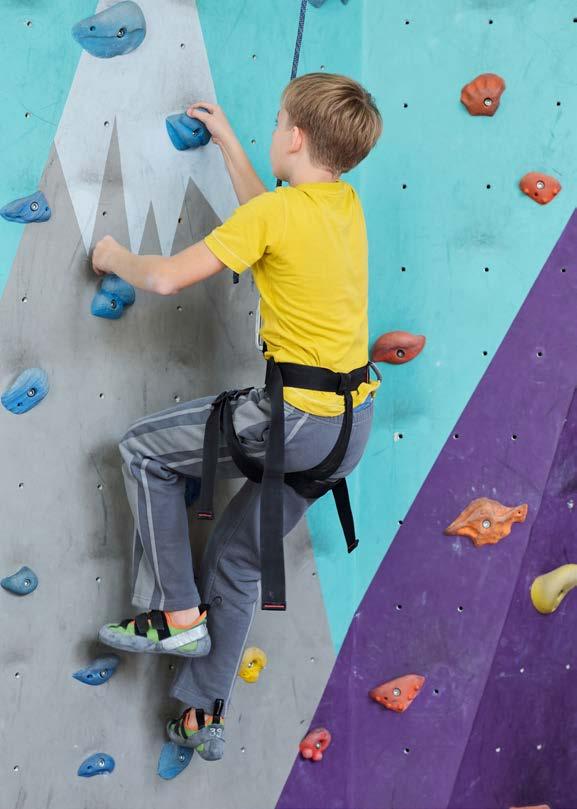
TRY OUT ROCK CLIMBING
If your kids are climbing the walls at home, get them onto a wall at a local indoor climbing gym. This is a great place for teamwork and kids of all ages can enjoy challenges based on their own personal levels of mastery. Gyms usually offer tickets for day passes, but if your family enjoys it, think about purchasing season passes so you can continue making memories all year long. North Mass Boulder and Climb Time Indy are great places to start.
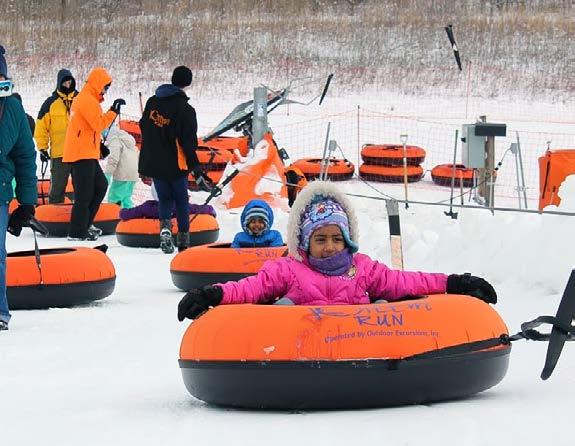
EXPERIENCE AN ADRENALINE RUSH WITH TOBOGGANING AND SNOW TUBING
When the snow finally starts falling, the snow tubing can begin! Koteewi State Park in Strawtown is a great place to feel the rush of careening downhill with your loved ones. You can also check out the Pokagon State Park Toboggan Run, open from November 29th through February 23rd if you want a quarter-mile course that may have you reaching speeds of 42mph!
Whether you have older kids or littles, there is something for everyone to enjoy right here in your backyard. Next time you are in the mood to shake things up, try something new, active and fun for the whole family!

Wherever yo u face cancer, Hanc oc k Health fights alo ngside you. Puttin g p ow erfu l tec hnol og y into the hands of a n expert team , backing i t with worl d-lea di ng Mayo Clinic resources, and g iv ing the pe ople of Eas t Central In diana all the support they n ee d Exactl y where it’s needed. Han co ckHealth.org/Cancer
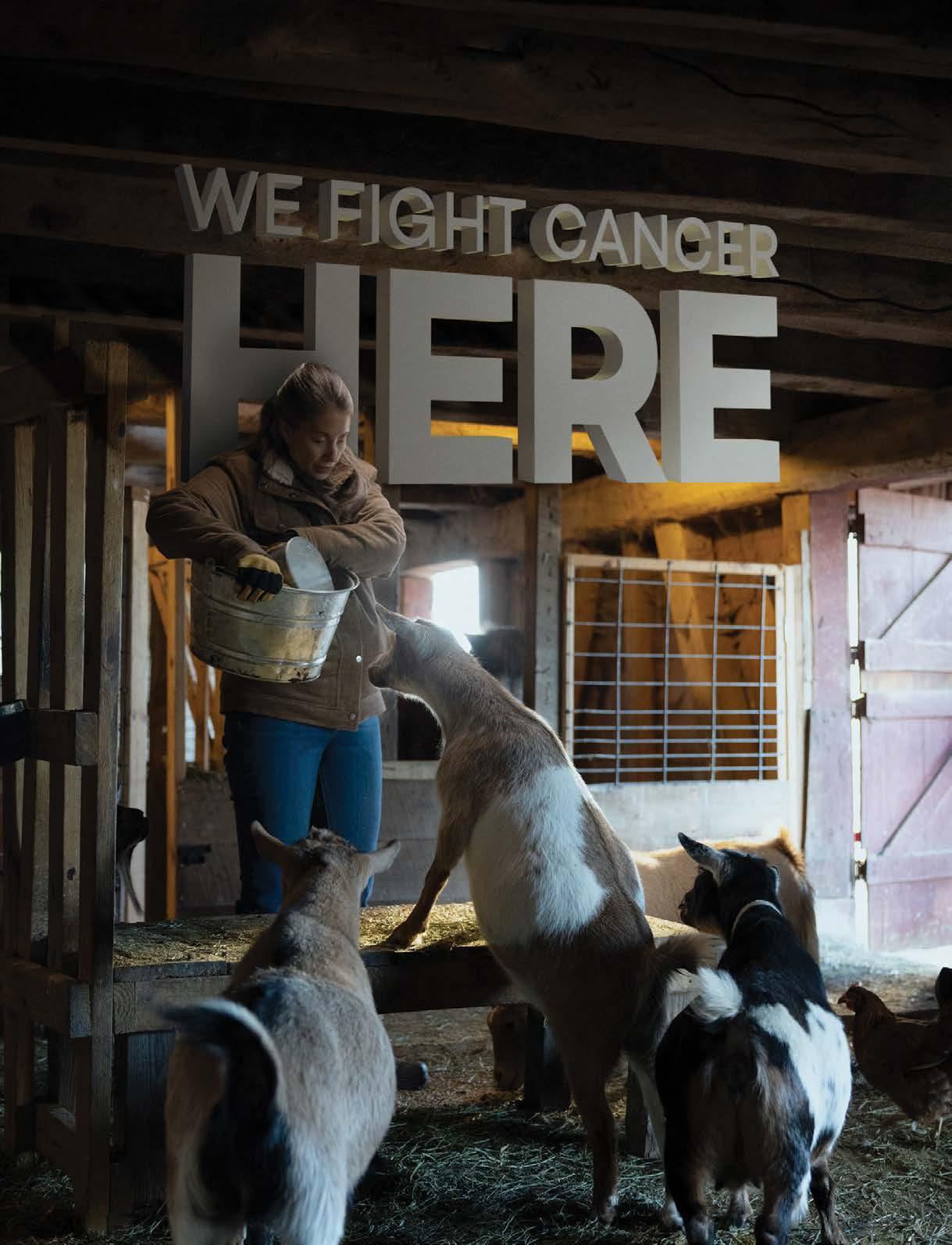

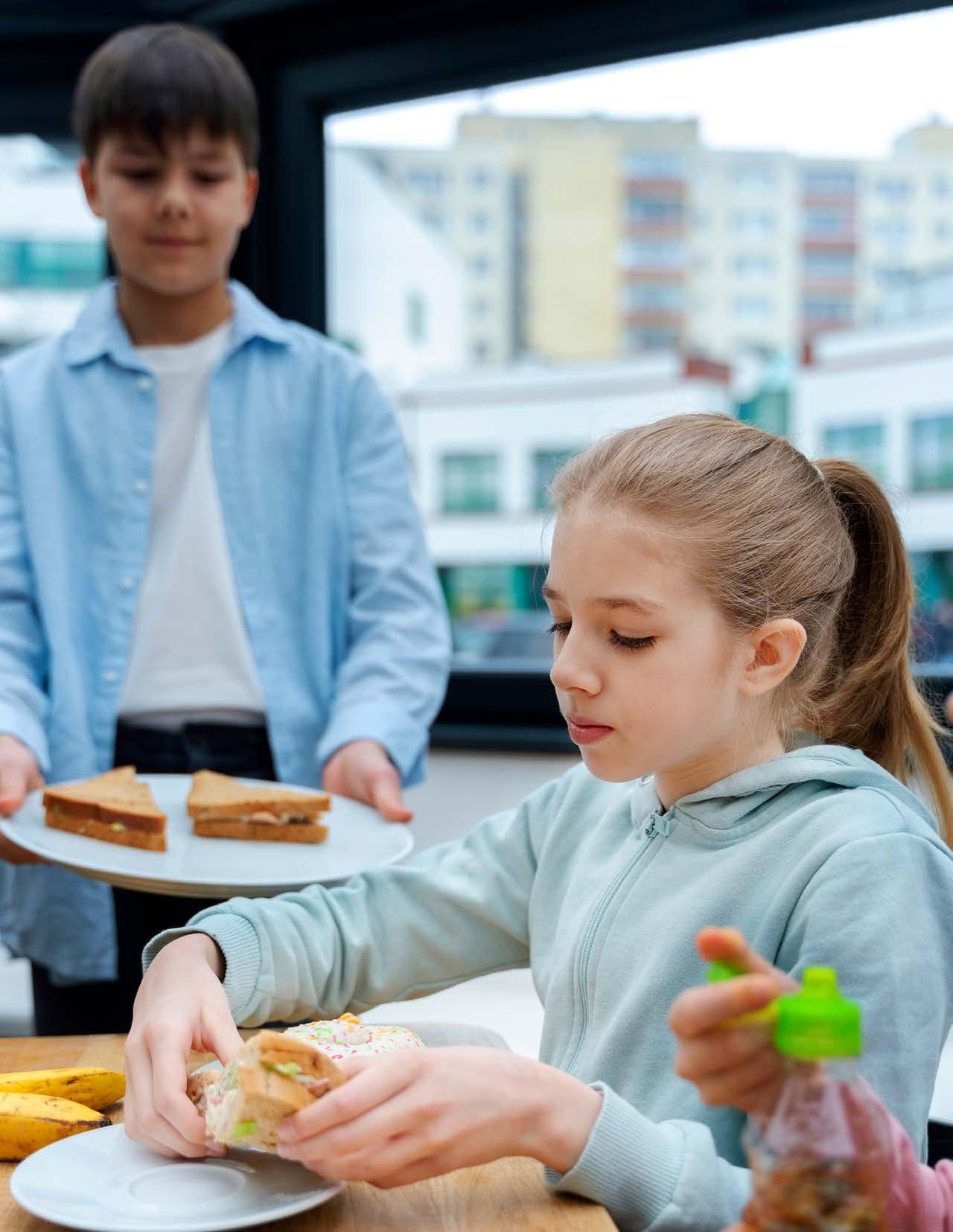
IT’S
NOT JUST ABOUT
MORE VEGGIES: HELPING YOUR KIDS DEVELOP A HEALTHY RELATIONSHIP WITH FOOD
Food can be a tricky subject. Some kids will devour brussels sprouts with glee while others are so picky that they have a very limited menu of options. Whether or not you have been having “food fights” in your house, now is a great time to think about ensuring your child’s healthy relationship with food and nutrition.
WHY HAVING A HEALTHY RELATIONSHIP WITH FOOD IS MORE IMPORTANT THAN HAVING A PERFECTLY NUTRITIOUS DIET
In our world today, kids are bombarded with advertising for junk foods, sugary drinks and more. This has led to a huge rise in obesity among children, which has now jumped past 14 million, as well as diseases such as diabetes and disordered eating. It’s safe to say that we can try our best to feed our kids well-balanced, healthy meals, but they will still be faced with decisions about what to eat when they are with friends or after they have grown and left our nest.
THIS IS WHERE HELPING YOUR CHILD CULTIVATE A HEALTHY RELATIONSHIP WITH FOOD BECOMES VITAL.
A good relationship with nourishment goes far beyond labeling foods as “good” or “bad” and, instead, asks kids (and their parents) to be reflective about how they feel after eating certain foods. Sometimes, eating a comfort food meal that might be considered less than healthy is the perfect solution for that moment in time. And yet other times call for choosing to fuel our bodies with plenty of fresh, whole foods.
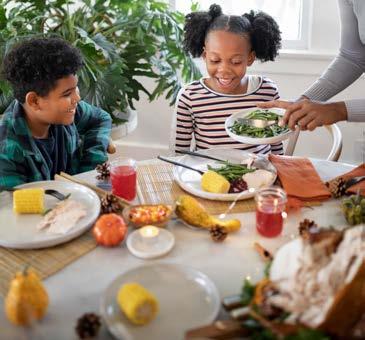
THE KEY LIES IN TEACHING AN INTENTIONAL APPROACH TO EATING WITHOUT JUDGMENT OR SHAME SURROUNDING
CERTAIN FOODS OR FOOD GROUPS AND, INSTEAD, VALUES AN APPROACH THAT HELPS THEM HONOR THEIR BODY’S NEEDS.
This can still feel abstract for some, and those kids or adults may benefit from what dietitians have coined the “90/10 lifestyle.” This helps us understand that 90 percent of the time, we should be fueling our bodies with nutritionally dense and nourishing foods. The other 10 percent of the time, you can feel free to eat anything your heart desires. This creates a less restrictive outlook on what to grab for your afternoon snack or dinner with friends, but also emphasizes the importance of a healthy foundational diet.
OKAY, BUT HOW DO YOU GET KIDS IN ON IT?
Every family is different and every child will have different needs when it comes to nutrition. For some parents, it might feel overwhelming to try to change the way they have approached food, especially if picky
eaters are involved. That being said, developing a positive relationship with food doesn’t have to mean more work or rigid routines. Here are some easy tips to help get you started:
GET THEM INTO THE KITCHEN
Bring kids into the kitchen to help with meal planning and prep - even the messy parts that you would rather avoid. Ask them what they want to cook for dinner that week and teach them how to craft simple recipes. This gets them interested in what goes on their plate and lets them have a little bit of control over certain mealtimes.
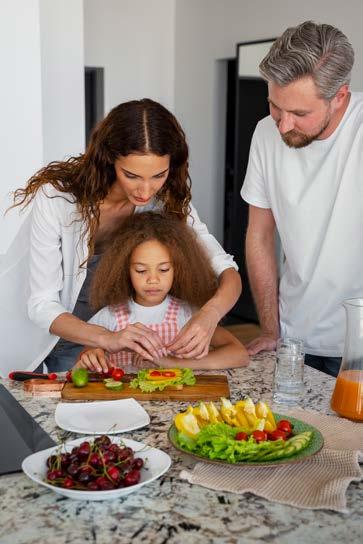
EAT THE RAINBOW
Plants are packed with antioxidants and phytonutrients, all of which vary based on the color you choose to eat. Red foods, such as tomatoes, for instance, have antiinflammatory properties, while green foods, such as spinach, help with your circulation. Challenge your kids to see how many colors (and therefore vitamins) they can rack up in a day! (And, no, food dyes don’t count.)

EAT THE R A I N B O W
Help your kids pack in the color and flavor to get a variety of vitamins, minerals and antioxidants in their diet.
Red foods: Tomatoes, red peppers, apples, cherries, strawberries
How they help you: anti-inflammatory compounds such as lycopene
Orange foods: Carrots, yams, squash, oranges
How they help: Contain carotenoids and phytoestrogens that help with reproductive health and maintain a healthy hormone balance
Yellow foods: Pineapple, lemon, bananas, ginger
How they help: Rich in serotonin and enzymes that help with happiness and digestion.
ENCOURAGE KIDS TO LISTEN TO THEIR BODIES
The human body knows what it needs from infancy through adulthood, but many people have lost the ability to tune in and listen. For some, it may come from a childhood of being told to “clean your plate”. While being a member of the clean plate club worked for the last few generations, presenting kids with a plateful of healthy foods and having them stop when they are full is a much better way to foster a healthy relationship with food and their bodies.
DON’T TIE REWARDS OR CONSEQUENCES TO FOOD
It’s easy to see your child doing their chores and offer ice cream as a reward. Or, watching your kids go to the mat over a toy and taking away dessert. But tying emotions to food is a sure-fire way to create emotional eating habits in our kids. Instead, use other opportunities such as a family game night, trip to the movies or sleepover with a friend to splurge on a treat.
Want to know more about helping your family to create a healthy relationship with food? The dietitians at the Hancock Wellness Centers are here to answer your questions! Just stop by the front desk at any location for more information.
Green foods: Lettuce, kale, avocados, asparagus
How they help: Contain cardiovascular helpers such as folate, magnesium, chlorophyll and vitamin D.
Blue/Purple foods: Blackberries, blueberries, prunes, eggplant, purple grapes
How they help: Contain compounds that incorporate into the brain to help with memory, mood and learning.
White foods: Mushrooms, cauliflower, onions, garlic
How they help: Rich in fiber to help with insulin and blood sugar balance as well as gut health.

A RECIPE FOR FUN
We said to get your kid into the kitchen, which means we can’t leave you hanging without a fun family recipe to try! If you are down to try something out of the ordinary and just challenging enough, then read on!
WINTER SLOPPY JOE SLIDERS
(courtesyoftheFoodNetworkKitchen)
With tastes that both adults and kids find delicious, sloppy joes are a great trip back in time. These ones are topped with some fresh, new ingredients that will have your taste buds thanking you. If you have a little kid, have them help with vegetables, measuring out ingredients and assembly. Older kids can help with all of these things as well as browning the meat and other stovetop duties.
WHAT YOU NEED: 1 Tbsp
vegetable oil
q 1 lb ground beef
q 1 Tbsp chili powder
q Kosher salt
q ¾ cup ketchup
q 1 Tbsp light brown sugar
q 1 Tbsp apple cider vinegar
q ½ cup frozen crinkle cut carrots
q ½ cup frozen baby corn
q 8 slider buns
q 1 cup thinly shredded red cabbage
q ¼ cup dill pickle chips
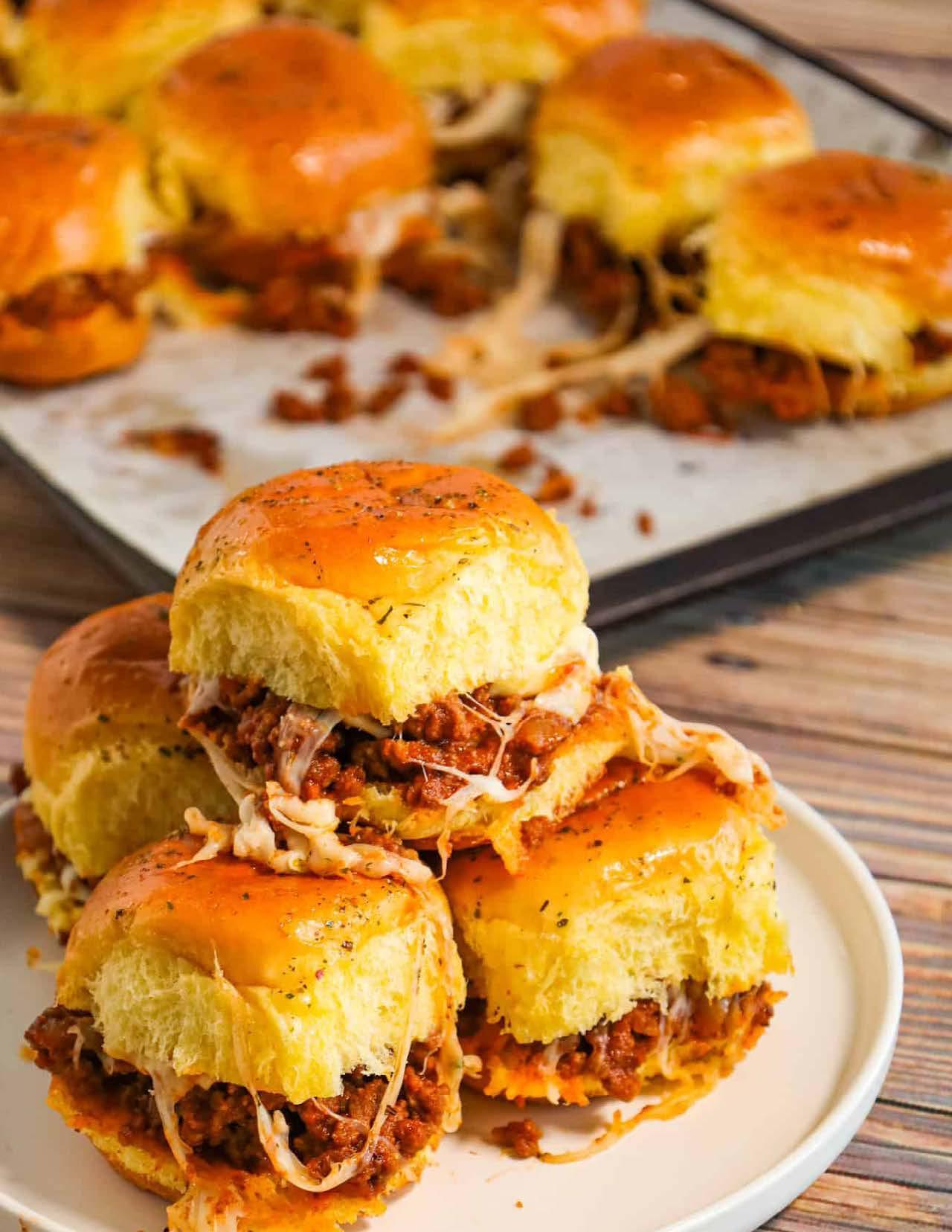
DIRECTIONS:
1. Heat oil in a large, nonstick skillet over medium-high heat. Add ground beef and brown until crumbly, about 4 minutes. Stir in chili powder and salt, brown for another 2 minutes until meat is cooked all the way through.
2. Lower heat and add in ketchup, brown sugar, vinegar and about ½ cup water. Simmer, stirring occasionally, until the sauce is slightly thickened, about 8 minutes. Add in carrots and corn and cook until the veggies are tender, about 5 more minutes.
3. Scoop sauce onto each slider bun and top with cabbage and pickles.
Want to add a bit more fun?
Try these other toppings as well:
• Avocado
• Potato chips
• Cheese of any kind
• Pickled vegetables such as sauerkraut or carrots
• Tortilla strips

A HEALTHY WINTER RECIPE
THAT WON’T DISAPPOINT
We said to get your kid into the kitchen, which means we can’t leave you hanging without a fun family recipe to try! If you are down to try something out of the ordinary and just challenging enough, then read on!
VEGETARIAN STUFFED PEPPERS
Stuffing peppers with beans, rice and plenty of cheese and throwing them in the oven is an easy-peasy way to prep an amazing dinner full of fiber, vitamins and minerals. Here is what you will need:
q 4 red bell peppers, halved lengthwise with seeds and membranes removed
q 2 Tbsp extra virgin olive oil
q 1 medium yellow onion, chopped
q 1 jalapeno pepper, stemmed and finely chopped
q 4 garlic cloves, chopped
q 2 Tbsp tomato paste
q 2 tsp chili powder
q 2 tsp ground cumin
q ¾ tsp sea salt
q Freshly ground black pepper
q 1 ½ cups cooked brown rice
q 1 ½ cups cooked black beans (canned are fine too)
q 1 cup corn kernels, fresh or frozen
q 2 Tbsp fresh lime juice
q 1 tsp lime zest
q 1 cup shredded pepper jack cheese
q ½ cup fresh cilantro
q Salsa and/or guacamole for serving (optional)
DIRECTIONS:
1. Preheat the oven to 450 degrees and line a baking sheet with parchment paper. Place peppers cut side up on a baking sheet and drizzle with olive oil, sprinkle with salt and pepper. Bake for 10 minutes until tender. Tip out or discard any liquid in the center after baking.
2. Prepare the filling: Heat the olive oil in a skillet over medium heat. Add onions, jalapenos and garlic and cook, stirring occasionally for about 5 minutes. Add tomato paste, spices, salt, and pepper and continue cooking for another 3 minutes.
3. Remove from heat and stir in brown rice, black beans, corn, lime juice and zest. Season to taste with salt and pepper.
4. Fill peppers with rice mixture and top with the cheese. Place in a large baking dish and broil for about 3-5 minutes until the cheese is melted and bubbly. Top with cilantro and serve with salsa and guacamole.

